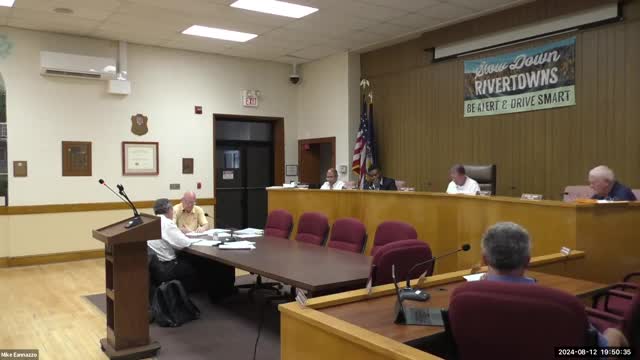County launches new recycling initiatives amid rising waste concerns
August 12, 2024 | Elmsford, Westchester County, New York

This article was created by AI summarizing key points discussed. AI makes mistakes, so for full details and context, please refer to the video of the full meeting. Please report any errors so we can fix them. Report an error »

In a recent government meeting, officials discussed significant trends in waste management and recycling within the county. A report from the Department of Public Works (DPW) revealed a 2% increase in garbage collection, while recycling rates have declined by the same percentage. This shift is attributed to the county's efforts to remove more recyclable materials from the waste stream, redirecting them to landfills.
The meeting highlighted a notable 14% decrease in electronic waste, attributed to the decline in bulky electronics like old televisions and computers. Conversely, revenue from the materials recovery facility (MERF) rose by 14%, driven by increased prices for recyclables.
Officials announced plans to transition from plastic to paper bags for food scraps, aiming to enhance sustainability efforts. The Household Material Recovery Facility (HMERF) has seen significant engagement, with over 85,100 visitors this year and a rising number of lithium battery drop-offs.
Upcoming changes include a substantial increase in solid waste fees, set to rise from $34 to $45 per ton by June 2025, alongside organic waste fees increasing to $29 per ton. However, there will be no charges for recyclables.
A new law mandates that all public garbage cans must be accompanied by recycling bins, ensuring easier access for residents to recycle. This requirement extends to private businesses in public spaces.
The county continues to promote recycling education, with flyers available to inform the public about the single-use plastic ban. Additionally, a new recycling app has been launched, allowing users to identify recyclable items by taking pictures while shopping.
Officials emphasized the importance of proper recycling practices, reminding residents that no plastic bags are permitted in recycling streams and that e-waste must be stored correctly. The meeting concluded with a call for community engagement, highlighting that increased recycling efforts can lead to significant cost savings for the county.
The meeting highlighted a notable 14% decrease in electronic waste, attributed to the decline in bulky electronics like old televisions and computers. Conversely, revenue from the materials recovery facility (MERF) rose by 14%, driven by increased prices for recyclables.
Officials announced plans to transition from plastic to paper bags for food scraps, aiming to enhance sustainability efforts. The Household Material Recovery Facility (HMERF) has seen significant engagement, with over 85,100 visitors this year and a rising number of lithium battery drop-offs.
Upcoming changes include a substantial increase in solid waste fees, set to rise from $34 to $45 per ton by June 2025, alongside organic waste fees increasing to $29 per ton. However, there will be no charges for recyclables.
A new law mandates that all public garbage cans must be accompanied by recycling bins, ensuring easier access for residents to recycle. This requirement extends to private businesses in public spaces.
The county continues to promote recycling education, with flyers available to inform the public about the single-use plastic ban. Additionally, a new recycling app has been launched, allowing users to identify recyclable items by taking pictures while shopping.
Officials emphasized the importance of proper recycling practices, reminding residents that no plastic bags are permitted in recycling streams and that e-waste must be stored correctly. The meeting concluded with a call for community engagement, highlighting that increased recycling efforts can lead to significant cost savings for the county.
View full meeting
This article is based on a recent meeting—watch the full video and explore the complete transcript for deeper insights into the discussion.
View full meeting
